 W
WThe August Frank memorandum of 26 September 1942 was a directive from SS Lieutenant General (Obergruppenführer) August Frank of the SS concentration camp administration department (SS-WVHA). The memorandum provides a measure of the detailed planning that Frank and other Nazis put into the carrying out of the Holocaust. It includes instructions as to the disposition of postage stamp collections and underwear of the murdered Jews. It is clear that the Nazis were intent in removing everything of value from their victims.
 W
WThe Auschwitz Protocols, also known as the Auschwitz Reports, and originally published as The Extermination Camps of Auschwitz and Birkenau, is a collection of three eyewitness accounts from 1943–1944 about the mass murder that was taking place inside the Auschwitz concentration camp in German-occupied Poland during the Second World War. The eyewitness accounts are individually known as the Vrba-Wetzler report, Polish Major's report, and Rosin-Mordowicz report.
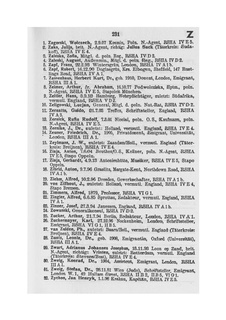 W
WThe Sonderfahndungsliste G.B. was a secret list of prominent British residents to be arrested, produced in 1940 by the SS as part of the preparation for the proposed invasion of Britain codenamed Unternehmen Seelöwe. After the war, the list became known as The Black Book.
 W
WThe Declaration by United Nations was the main treaty that formalized the Allies of World War II and was signed by 47 national governments between 1942 and 1945. On New Year's Day 1942, during the Arcadia Conference, the Allied "Big Four" signed a short document which later came to be known as the United Nations Declaration and the next day the representatives of 22 other nations added their signatures.
 W
WThe Disciplinary and Penal Code was first written for Dachau concentration camp and became the uniform code at all SS concentration camps in the Third Reich on January 1, 1934. Also known as the Strafkatalog, it detailed the regulations for prisoners. SS guards were instructed to report violations of the code to the commandant's office. The Concentration Camps Inspectorate was responsible for execution of the resulting punishment, which was carried out without verification of the allegations or any possibility of vindication.
 W
WThe Einsatzgruppen Operational Situation Reports (OSRs), or ERM for the German: Die Ereignismeldung UdSSR, were dispatches of the Nazi death squads (Einsatzgruppen), which documented the progress of the Holocaust behind the German-Soviet frontier in the course of Operation Barbarossa, during World War II. The extant reports were sent between June 1941 and April 1942 to the Chief of the Security Police and the SD in Berlin, from the occupied eastern territories including modern-day Poland, Belarus, Ukraine, Russia, Moldova, and the Baltic Countries. During the Nuremberg War Crimes Trials the originals were grouped according to year and month and catalogued using a consecutive numbering system, as listed in the below table. The original photostats are held at the National Archives in Washington D.C..
 W
WEiss Archive refers to the collection of documents and related memorabilia documenting the rescue by Polish diplomats of Jews threatened by the Holocaust during World War II. The archive is named after Chaim Yisroel Eiss, a Jewish Rabbi and activist who jointly set up the Ładoś Group.
 W
WThe Gerstein Report was written in 1945 by Kurt Gerstein, Obersturmführer of the Waffen-SS, who served as Head of Technical Disinfection Services of the SS in World War II, and in that capacity supplied the hydrogen cyanide-based pesticide Zyklon B from Degesch to Rudolf Höss in Auschwitz, and conducted the negotiations with the owners. On 18 August 1942, along with Rolf Günther and Wilhelm Pfannenstiel, Gerstein witnessed the gassing of some 3,000 Jews in the extermination camp of Belzec in occupied Poland. The report features his eyewitness testimony. It was used as evidence in the Nuremberg Trials.
 W
W"Green Folder" refers to a document belonging to Reichsmarschall Hermann Göring which was presented in the Nuremberg Trials. This was the master policy directive for the economic exploitation of the conquered Soviet Union. The implications of this document were the deaths by starvation of millions of Slavic people, something that partially came to pass in the Holocaust, the neglect of Soviet soldiers captured by the Nazis which led to huge mortality rates, and the general expropriation of food in the occupied areas of the Soviet Union. It is also referred to as Document of the Soviet Prosecution, Exhibit USSR 10.
 W
WThe Harrison Report was a July 1945 report carried out by United States lawyer Earl G. Harrison, as U.S. representative to the Intergovernmental Committee on Refugees, into the conditions of the displaced persons camps in post-World War II Europe.
 W
WThe Höfle Telegram is a cryptic one-page document, discovered in 2000 among the declassified World War II archives of the Public Record Office in Kew, England. The document consists of several radio telegrams in translation, among them a top-secret message sent by SS Sturmbannführer Hermann Höfle on 11 January 1943; one, to SS Obersturmbannführer Adolf Eichmann in Berlin, and one to SS Obersturmbannführer Franz Heim in German-occupied Kraków (Cracow).
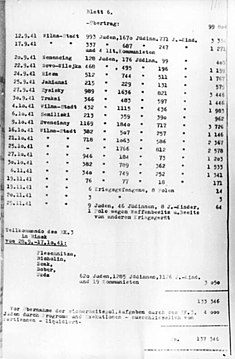 W
WThe so-called Jäger Report, also Jaeger Report was written on 1 December 1941 by Karl Jäger, commander of Einsatzkommando 3, a killing unit of Einsatzgruppe A which was attached to Army Group North during the Operation Barbarossa. It is the most detailed and precise surviving chronicle of the activities of one individual Einsatzkommando, and a key record documenting the Holocaust in Lithuania as well as in Latvia and Belarus.
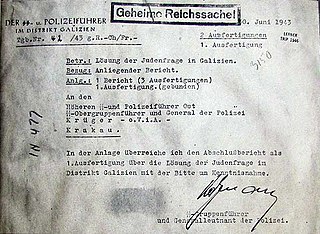 W
WThe Katzmann Report is one of the most important testimonies relating to the Holocaust in Poland and the extermination of Polish Jews during World War II. It was used as evidence in Nuremberg Trials and numerous other proceedings against war criminals abroad. It is a leather-bound report by SS-Gruppenführer Fritz Katzmann, Commander of the German SS and Police in the District of Galicia, entitled "Lösung der Judenfrage im Distrikt Galizien", submitted on June 30, 1943 to the SS and Police Chief Friedrich Krüger. It describes part of the Operation Reinhard.
 W
WThe Korherr Report is a 16-page document on the progress of the Holocaust in German-controlled Europe. It was delivered to Heinrich Himmler in January 1943 by the chief inspector of the statistical bureau of the SS and professional statistician Dr Richard Korherr under the title die Endlösung der Judenfrage, in English the Final Solution to the Jewish Question. Commissioned by Himmler, Korherr calculated that, from 1937 to December 1942, the number of Jews in Europe had fallen by 4 million. Between October 1939 and December 31, 1942, 1.274 million Jews had been "processed" at the camps of General Government and 145,000 at the camps in Warthegau.
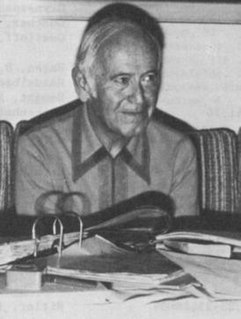 W
WDr. Richard Korherr was a professional statistician in Nazi Germany, and chief inspector of the statistical bureau of the SS during World War II. Korherr eventually held the rank of SS-Sturmbannführer.
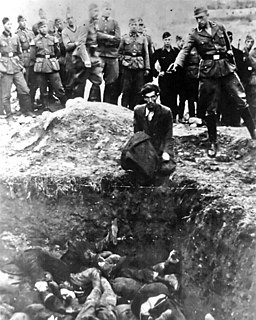 W
WThe Last Jew in Vinnitsa is a photograph taken during the Holocaust in Ukraine showing a Jewish man near the town of Vinnitsa (Vinnytsia) about to be shot dead by a member of Einsatzgruppe D, a mobile death squad of the Nazi SS. The victim is kneeling beside a mass grave already containing bodies; behind, a group of SS and Reich Labour Service men watch.
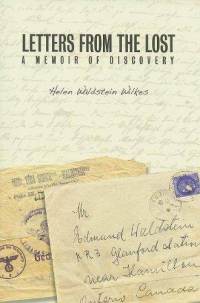 W
WLetters from the Lost: A Memoir of Discovery is a non-fiction memoir, written by Canadian writer Helen Waldstein Wilkes, first published in December 2009 by Athabasca University Press. In the book, the author chronicles her discoveries after reading a box of letters she had never before seen. Her Jewish parents had fled Czechoslovakia in April 1939 to seek haven in Canada. Once in place, they corresponded with family and friends, encouraging them to escape the mounting peril that Hitler had envisioned as the Final Solution. Wilkes would learn that shortly after her parents migration, the ability to flee had been curtailed; and that each letter, compounded the historical anguish the writers were forced to endure.
 W
WThe Persecution and Murder of the European Jews by Nazi Germany, 1933–1945 is a book series that contains documents relating to the Holocaust, edited and translated, with scholarly introductions by historians. Since 2008, thirteen volumes have been published in German, with three pending; the first two volumes have also been published in English. The third English volume is scheduled for publication in 2020.
 W
WWitold's Report, also known as Pilecki's Report, is a report about the Auschwitz concentration camp written in 1943 by Witold Pilecki, a Polish military officer and agent of the Polish resistance. Pilecki volunteered in 1940 to be imprisoned in Auschwitz to organize a resistance movement and send out information about it. His was the first comprehensive record of a Holocaust death camp to be obtained by the Allies. He escaped from the camp in April 1943.
 W
WThe Posen speeches were two speeches made by Heinrich Himmler, the head of the SS of Nazi Germany, on 4 and 6 October 1943 in the town hall of Posen (Poznań), in German-occupied Poland. The recordings are the first known documents in which a member of the Hitler Cabinet spoke of the ongoing extermination of the Jews in extermination camps. They demonstrate that the German government wanted, planned and carried out the Holocaust.
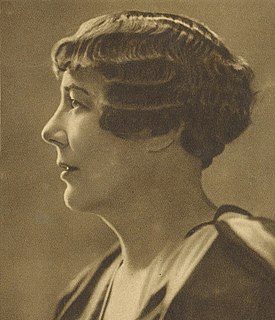 W
WProtest! was a clandestine leaflet issued in 1942 as a protest by Polish Catholics against the mass murder of Jews in German-occupied Poland.
 W
WRaczyński's Note, dated December 10, 1942, and signed by Minister of Foreign Affairs Edward Raczyński, was the official diplomatic note from the government of Poland in exile regarding the extermination of the Jews in German-occupied Poland. Sent to the foreign ministers of the Allies, it was the first official report on the Holocaust to inform the Western public about these crimes. It identified Treblinka, Bełżec and Sobibór by name as extermination camps. It was also the first official speech of one of the governments of Nazi-occupied Europe in defense of all Jews persecuted by Germany – not only citizens of their country.
 W
WThe Riegner Telegram was a telegraph message sent on 8 August 1942 from Gerhart Riegner, then Secretary of World Jewish Congress (Geneva), to its New York and London offices. The cable confirmed the alarming reports that had reached the West previously about the German intention to mass murder the European Jews.
 W
WThe Ringelblum Archive is a collection of documents from the World War II Warsaw Ghetto, collected and preserved by a group known by the codename Oyneg Shabbos, led by Jewish historian Dr. Emanuel Ringelblum. The group, which included historians, writers, rabbis, and social workers, was dedicated to chronicling life in the Ghetto during the German occupation. They worked as a team, collecting documents and soliciting testimonies and reports from dozens of volunteers of all ages. The materials submitted included essays, diaries, drawings, wall posters, and other materials describing life in the Ghetto. The collecting work began in September 1939 and ended in January 1943.
 W
WThe Sonderkommando photographs are four blurred photographs taken secretly in August 1944 inside the Auschwitz concentration camp in German-occupied Poland. Along with a few photographs in the Auschwitz Album, they are the only ones known to exist of events around the gas chambers.
 W
WSpecial Prosecution Book-Poland was the proscription list prepared by the Germans immediately before the onset of war, that identified more than 61,000 members of Polish elites: activists, intelligentsia, scholars, actors, former officers, and prominent others, who were to be interned or shot on the spot upon their identification following the invasion.
 W
WThe Stroop Report is an official report prepared by General Jürgen Stroop for the SS chief Heinrich Himmler, recounting the German suppression of the Warsaw Ghetto Uprising and the liquidation of the ghetto in the spring of 1943. Originally titled The Jewish Quarter of Warsaw is No More!, it was published in the 1960s.
 W
WThe Black Book of Poland is a 750-page report published in 1942 by the Ministry of Information of the Polish government-in-exile, describing atrocities committed by Germany in occupied Poland in the 22 months between the invasion of Poland in September 1939, and the end of June 1941.
 W
WThe Mass Extermination of Jews in German Occupied Poland was a brochure published by the Polish government-in-exile on 10 December 1942 and sent to the foreign ministers of the 26 government signatories of the Declaration by United Nations. It was the first official document informing the Western public about the Holocaust in German-occupied Poland.
 W
WThe Polish White Book is a semi-official name of a series of comprehensive reports published during World War II by the Ministry of Information of the Polish government-in-exile in London, England, dealing with Polish-German relations before and after the 1939 German-Soviet aggression against Poland. Each publication, released in English, French, German and Polish between 1940 and 1941, consisted of official documents and affidavits, supplemented with an overview by the Ministry. Notably, the Polish White Book was released in parallel with The Black Book of Poland series by G.P. Putnam's Sons of New York, published in London by Hutchinson & Co under a differing title in 1942.
 W
WTheresienstadt. Ein Dokumentarfilm aus dem jüdischen Siedlungsgebiet, unofficially Der Führer schenkt den Juden eine Stadt, was a black-and-white projected Nazi propaganda film. It was directed by the German Jewish prisoner Kurt Gerron and the Czech filmmaker Karel Pečený under close SS supervision in Theresienstadt concentration camp, and edited by Pečený's company, Aktualita. Filmed mostly in the fall of 1944, it was completed on 28 March 1945 and screened privately four times. After the war, the film was lost but about twenty minutes of footage was later rediscovered in various archives.
 W
WThe Theresienstadt Papers are a collection of historical documents of the Jewish self-government of Theresienstadt concentration camp. These papers include an "A list" of so-called "prominents" interned in the camp and a "B-list" created by the Jewish Elders themselves. The Theresienstadt papers include two albums with biographies and many photographs, 64 watercolors and drawings from prisoners in Theresiendstadt, and the annual report of the Theresienstadt Central Library. The papers were preserved at the liberation of the camp in May 1945 by Theresienstadt librarian Käthe Starke-Goldschmidt and later loaned to the Altona Museum for Art and Cultural History in Hamburg by her son Pit Goldschmidt. The collection was opened for viewing by the public in 2002 at the Heine Haus branch of the Altona Museum.
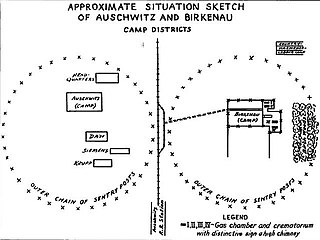 W
WThe Vrba–Wetzler report is one of three documents that comprise what is known as the Auschwitz Protocols, otherwise known as the Auschwitz Report or the Auschwitz notebook. It is a 33-page eye-witness account of the Auschwitz concentration camp in German-occupied Poland during the Holocaust.
 W
WThe Wannsee Conference was a meeting of senior government officials of Nazi Germany and Schutzstaffel (SS) leaders, held in the Berlin suburb of Wannsee on 20 January 1942. The purpose of the conference, called by the director of the Reich Main Security Office SS-Obergruppenführer Reinhard Heydrich, was to ensure the co-operation of administrative leaders of various government departments in the implementation of the Final solution to the Jewish question, whereby most of the Jews of German-occupied Europe would be deported to occupied Poland and murdered. Conference participants included representatives from several government ministries, including state secretaries from the Foreign Office, the justice, interior, and state ministries, and representatives from the SS. In the course of the meeting, Heydrich outlined how European Jews would be rounded up and sent to extermination camps in the General Government, where they would be killed.
 W
W